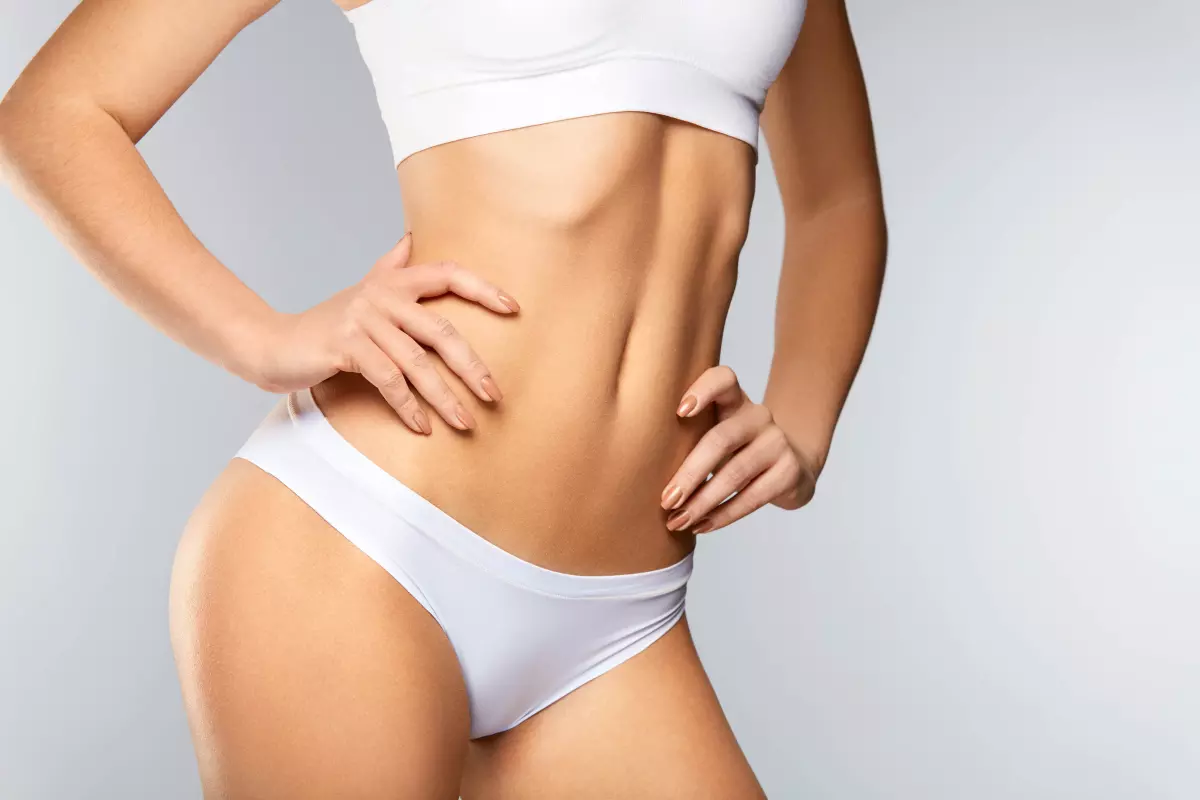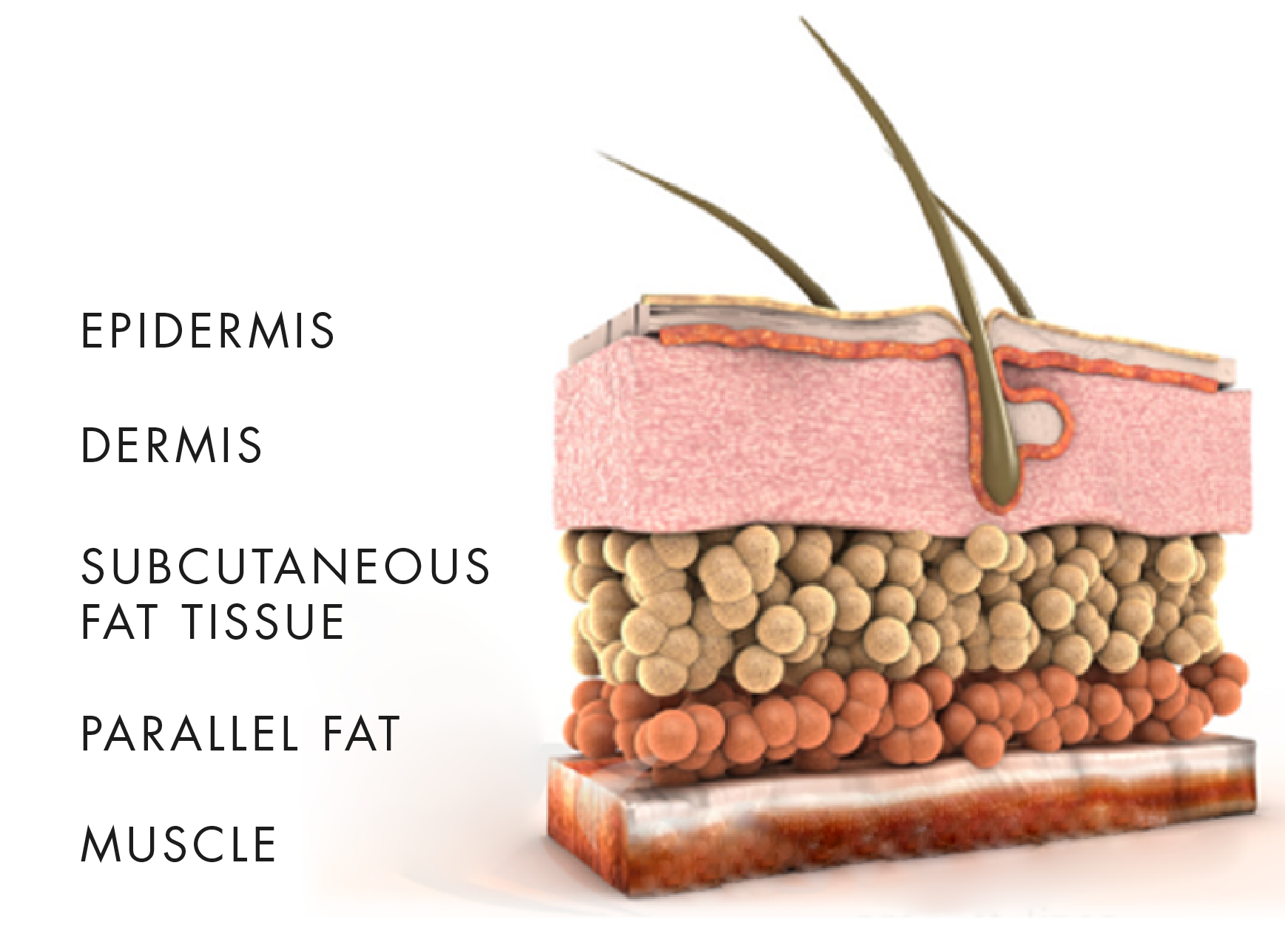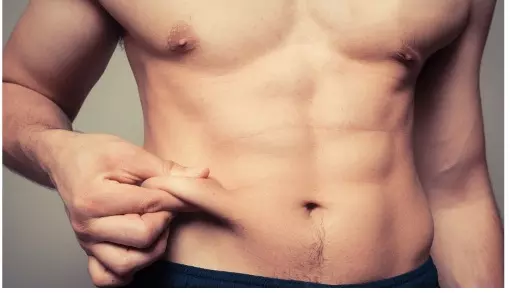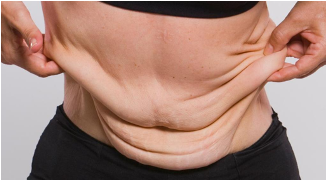LIPOCLINIC St. Gallen
9000 St. Gallen
LIPOCLINIC Zürich
8004 Zürich

The dermis lies directly under the epidermis. This is usually 2-4mm thick but can also be thicker in individual cases. This cannot be removed but is constitutional and can only be reduced through strict diets. Neither liposuction, ultrasound nor fat removal injections can reduce the dermis. This is home to a large network of vessels called the "reticular plexus". If liposuction is performed too superficially, this vascular network is destroyed. This results in permanent blue or red discoloration of the skin, which unfortunately never disappears. For this reason, the dermis must never be damaged when treating the fat.

Under the dermis is the subcutaneous layer: It is this layer that can be treated with liposuction, cryolipolysis, ultrasound or fat-away injections.
The epidermis and dermis can often lead to a rather thick layer when "pinching": However, this is not fat, but skin. As liposuction can only reduce fat, there will be little difference if the unwanted volume is largely skin-based.

Please note that the real fat layer is only half as thick as the wrinkle thickness you hold in your hand during the pinch test. In the above case, the problem is not fat, but shifting skin.
When you pinch the skin, you compress the real subcutaneous fat layer and thus double its thickness, but this does not correspond to reality. In such cases, removing the fat has virtually no effect, as this skin fold is formed entirely by the epidermis and dermis.
Liposuction usually produces sensational results when it is the subcutaneous fatty tissue that forms the troublesome fat pads. However, excess epidermis and subcutaneous tissue can never be treated.
If you are unsure whether you have fat or just too much skin, this can be examined in detail: A fat clamp measures the exact fat layer of the skin. Alternatively, the fat can also be measured by ultrasound and the fat layer can be precisely determined in the image.
Unfortunately, these anatomical conditions – i.e., the confusion between sagging skin and the subcutaneous fat layer – often lead to misunderstandings among patients, because different results are expected than the procedures that reduce the subcutaneous fat layer allow.
Here is an example of a slim, defined body. This skin fold is not a fat fold and liposuction would not achieve anything here.

Here is another example of a skin problem that is not fat-based. Here, too, treatment of the subcutaneous fatty tissue would not produce any results.

"Pseudo fat" always leads to frustration, especially on the abdomen and sides (waist, "love handles"). After the liposuction, fat still "hangs down" over the sides of the trousers. When naked, the body looks very good, but when dressed in tight jeans, the fat seems to be back. "Pseudo-fat" describes the condition of some areas of the body that are often misinterpreted as fat, but are in fact shifting skin. "Pseudo-fat" is very often confused with residual fat pads, but further liposuction would not produce any results.
Typical areas:
We understand that aesthetic treatment needs to be carefully considered. We are therefore happy to take the time to answer all your questions during a free, no-obligation initial consultation. Arrange your consultation appointment today at one of our two LIPOCLINICs.
If you would like a brief online preliminary clarification before your consultation, you can also contact us by e-mail.
No matter how you want to reach us – we look forward to hearing/reading from you!